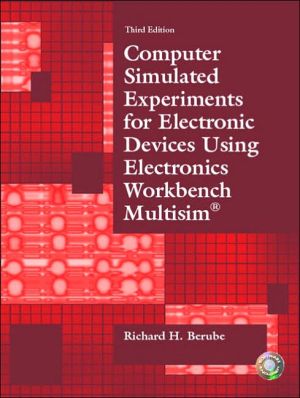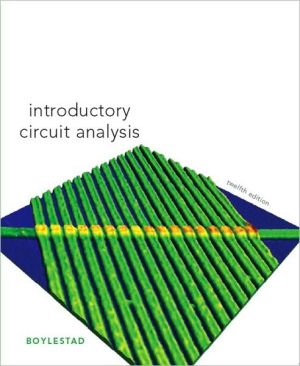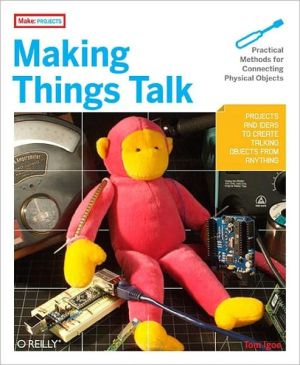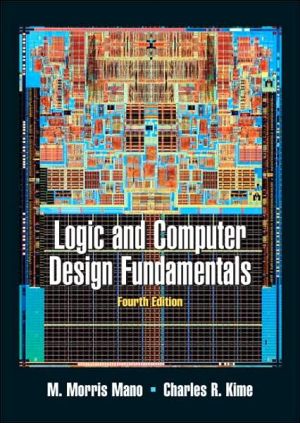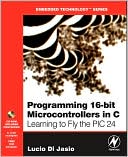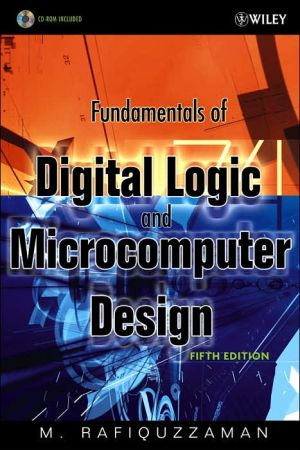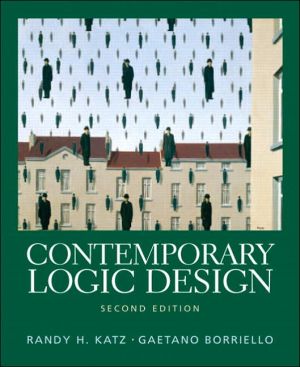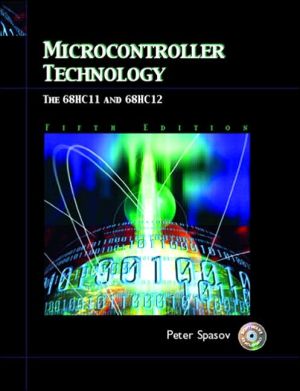Computer Simulated Experiments for Electronic Devices Using Electronics Workbench Multisim
Created to provide a safer and more cost effective lab environment, these innovative manuals introduce new methods to learning and understanding circuit analysis concepts by using Electronics Workbench to simulate actual lab experiments on the computer. Using the latest circuit simulation software, they allow for easy circuit modification, more extensive troubleshooting experiments, and more powerful computational tools. Readers work with circuits drawn on the computer screen and with...
Search in google:
Created to provide a safer and more cost effective lab environment, these innovative manuals introduce new methods to learning and understanding circuit analysis concepts by using Electronics Workbench to simulate actual lab experiments on the computer. Using the latest circuit simulation software, they allow for easy circuit modification, more extensive troubleshooting experiments, and more powerful computational tools. Readers work with circuits drawn on the computer screen and with simulated instruments that act like actual laboratory instruments. Circuits can be modified easily with on-screen editing, and analysis results provide fast, accurate feedback. The manuals provide extensive technical preparation for each interactive experiment, and a series of questions about the results of each experiment requires users to think about and to analyze the results of the experiments in more depth than is customary in other lab manuals.The manual examines diodes, bipolar transistors, field-effect transistors, operational amplifiers, amplifier frequency response, active filters, and oscillators.For individuals interested in fine tuning their knowledge of electronic devises using Electronics Workbench.
Computer Simulated Experiments for Electronic Devices Using Electronics Workbench Multisim®, Third Edition, is a unique and innovative laboratory manual that uses Multisim to simulate actual laboratory experiments on a computer. Computer simulated experiments do not require extensive laboratory facilities, and a computer provides a safe and cost effective laboratory environment. Circuits can be modified easily with on-screen editing, and analysis results provide faster and better feedback than a series of lab experiments using hardwired circuits.\ The experiments are designed to help reinforce the theory learned in an electronic devices course. By answering questions about the results of each experiment, students will develop a clearer understanding of the theory. Also, the interactive nature of these experiments encourages student participation in the learning process, which leads to more effective learning and a longer retention of the theoretical concepts.\ A series of troubleshooting problems is included at the end of many of the experiments to help students develop troubleshooting skills. In each troubleshooting problem, the parts bin has been removed to force the student to find a fault or component value by making a series of circuit measurements using only the instruments provided. A solutions manual showing measured data, calculations, answers to the questions, and answers to the troubleshooting problems is available to instructors.\ In the third edition, the circuits have been modified and some of the experiments have been changed for the Multisim 2001 circuit simulator. Also in the third edition, the name of the "Preparation" section of each experiment has been changed to "Theory". This "Theory" section has all of the technical information needed to do the calculations and answer the questions in the "Procedure" section without referring to another textbook, and makes it possible to use this manual as a combination text and lab manual, if desired. These modifications should make these experiments work better with the new Multisim software.\ Richard H. Berube\ Email rberube@ccri.edu
Introduction.I. DIODES. 1. Semiconductor Diodes. 2. Semiconductor Diode Characteristic Curve. 3. Zener Diodes and Voltage Regulation. 4. Half-Wave Rectifier. 5. Full-Wave Rectifier. 6. Bridge Rectifier. 7. Rectifier Filters. 8. Voltage-Regulated Power Supply. 9. The Diode Clipper (Limiter).10. The Diode Clamper.II. BIPOLAR TRANSISTORS.11. Bipolar Transistor Characteristics.12. Base-Biased NPN Transistor.13. Voltage-Divider Biased NPN Transistor.14. Voltage-Divider Biased PNP Transistor.15. Emitter Bias.16. Collector-Feedback Bias.17. Small-Signal Common-Emitter Amplifier.18. Cascaded Common-Emitter Amplifier.19. Emitter Follower.20. Large-Signal Class A Amplifier.21. Class B Push-Pull Amplifier.22. Class C Amplifier.III. FIELD-EFFECT TRANSISTORS.23. JFET Characteristics.24. MOSFET Characteristics.25. JFET Bias Circuits.26. MOSFET Bias Circuits.27. JFET Small-Signal Common-Source Amplifier.28. MOSFET Small-Signal Common-Source Amplifier.IV. OPERATIONAL AMPLIFIERS.29. Differential Amplifiers.30. Operational Amplifiers.31. Noninverting Voltage Amplifier.32. Inverting Voltage Amplifier.33. Op-Amp Comparators.34. Op-Amp Summing Amplifier.35. Op-Amp Integrator and Differentiator.V. AMPLIFIER FREQUENCY RESPONSE.36. Low-Frequency Amplifier Response.37. High-Frequency Amplifier Response.38. Op-Amp Frequency Response.VI. ACTIVE FILTERS.39. Low-Pass Active Filters.40. High-Pass Active Filters.41. Band-Pass Active Filters.42. Band-Step (Notch) Active Filters.VII. OSCILLATORS.43. Wien-Bridge Oscillator.44. Colpitts Oscillator.45. Astable Multivibrator.Appendix.Bibliography.
